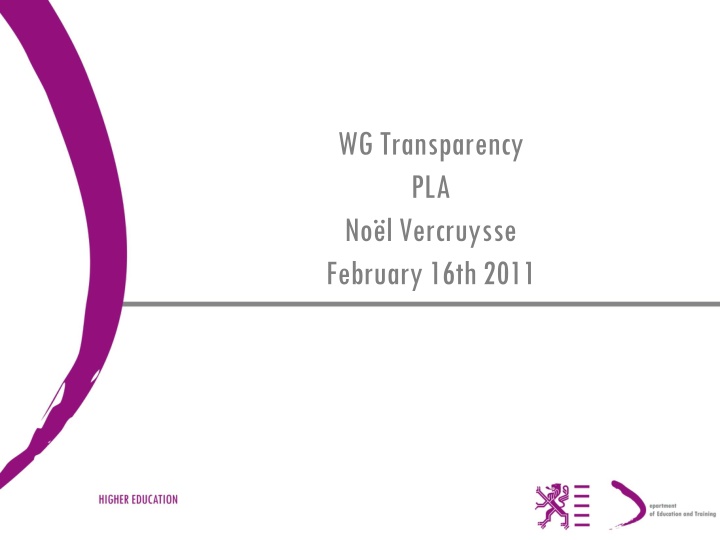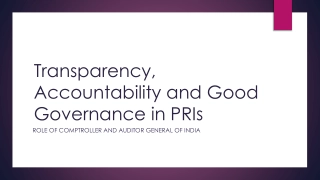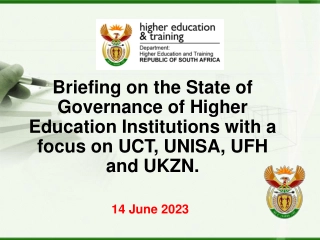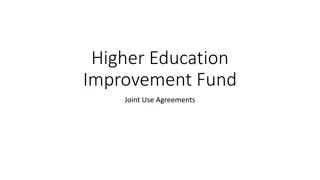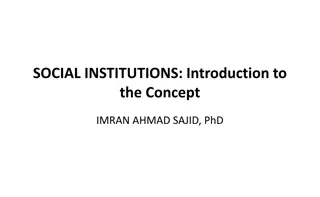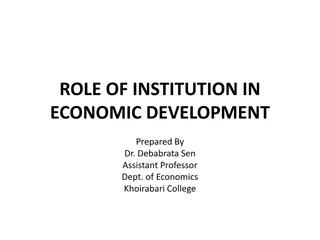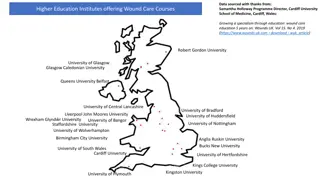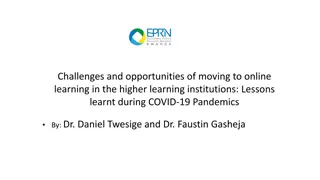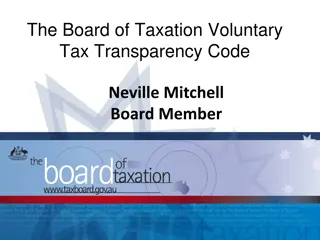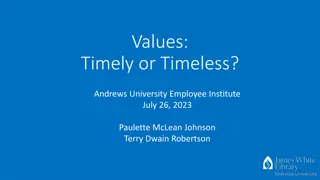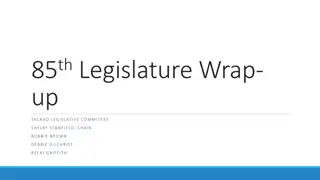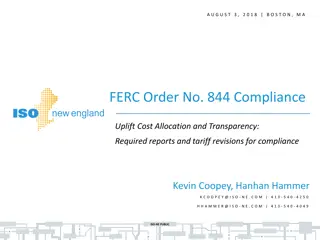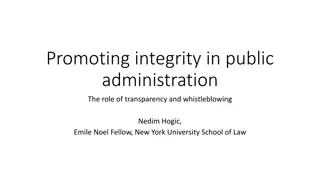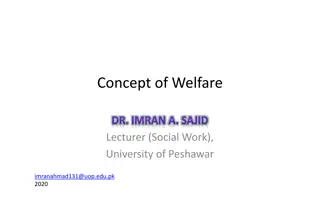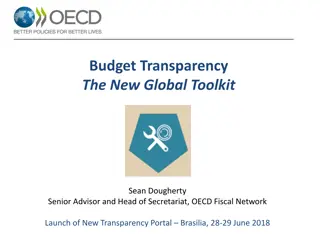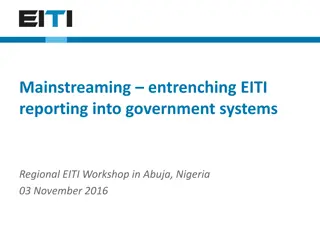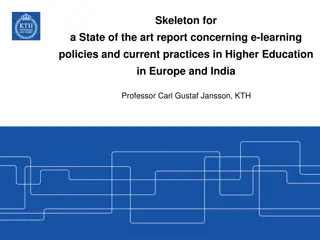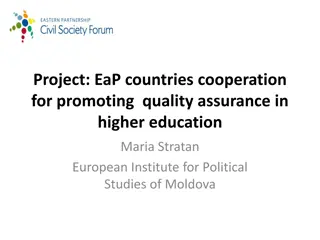Enhancing Transparency in Higher Education Institutions
Striving for excellence in all aspects of higher education, recognizing the value of diverse missions, and upholding the highly valued diversity of education systems are key themes emphasized in the Leuven Communiqués. Various transparency initiatives and tools such as THE Shanghai Ranking, CHE University Ranking, and U-Multirank aim to provide detailed information on institutions across the EHEA. Monitoring these mechanisms is essential to ensure transparency and accountability in higher education.
Uploaded on Sep 27, 2024 | 0 Views
Download Presentation

Please find below an Image/Link to download the presentation.
The content on the website is provided AS IS for your information and personal use only. It may not be sold, licensed, or shared on other websites without obtaining consent from the author.If you encounter any issues during the download, it is possible that the publisher has removed the file from their server.
You are allowed to download the files provided on this website for personal or commercial use, subject to the condition that they are used lawfully. All files are the property of their respective owners.
The content on the website is provided AS IS for your information and personal use only. It may not be sold, licensed, or shared on other websites without obtaining consent from the author.
E N D
Presentation Transcript
WG Transparency PLA No l Vercruysse February 16th 2011
Context Leuven communiqu Striving for excellence in all aspects of HE Recognising the value of diverse missions Diversity as a value/an asset of the EHEA Diversity: activities, missions, contexts and performances
Leuven communiqu Moreover upholding the highly valued diversity of our education systems, public policies should fully recognize the value of various missions of higher education, ranging from teaching and research to community service and engagement in social cohesion and cultural development Improved and enhanced data collection will help monitor progress made in attainment of the objectives set out in the social dimension, employability and mobility agendas as well as in other policy areas, and will serve as a basis for both stocktaking and benchmarking;
Leuven Communiqu We note that there are several current initiatives designed to develop mechanisms for providing more detailed information on higher education institutions across the EHEA to make their diversity more transparant. Those transparency tools should be based on comparable data and adequate indicators to describe the diverse profiles of HEIs and their programmes; The BFUG is asked to monitor the development of the transparency mechanisms and to report back to the 2012 ministerial conference.
Current Transparency Initiatives THE Shanghai Ranking of World Class Universities CHE university ranking CHE excellence ranking IREG: audit of rankings EU: U-Map; U-Multirank, EUMIDA EUA: monitoring rankings UK: Understanding the information needs of users of public information about HE; understandig institutional performance
Current Transparency Initiatives Conclusions of DG HE meeting Namur September 2010 US: Measuring Up, Voluntary system of Accountability, Voluntary framework of accountability AHELO Bologna working group Transparency Tools
Objectives To monitor the development of transparency tools and mechanisms both the purposes and the objectives (information, accountability, quality) and the indicators and criteria used (input/processes, output/outcomes) To make a report to the 2012 ministerial conference
Scope Rankings Classifications Public benchmarking excercises Quality profiles Registers Accountability frameworks
Possible Components of the report The concept of transparency tools: transparency for what, categories of transparency tools; The geographical borders: transparency tools developed in the EHEA and(?) transparency tools that have an impact on the EHEA The information function of the transparency tools: what audiences transparency tools are addressing or should address, what are the decisions transparency are informing or should inform for each category of beneficiaries?
Possible components of the report The accountability functions of TT: diversity; understanding performances of institutions and systems TT as quality mechanisms: are TT reliable indicators of quality or of a lack of quality? The methodological aspects of TT: what are the indicators and criteria used?
Further work In 2011: 3 meetings of the WG Meeting with experts on the topic but also HE Policy experts/researchers BFUG Transparency seminar under Polish presidency
